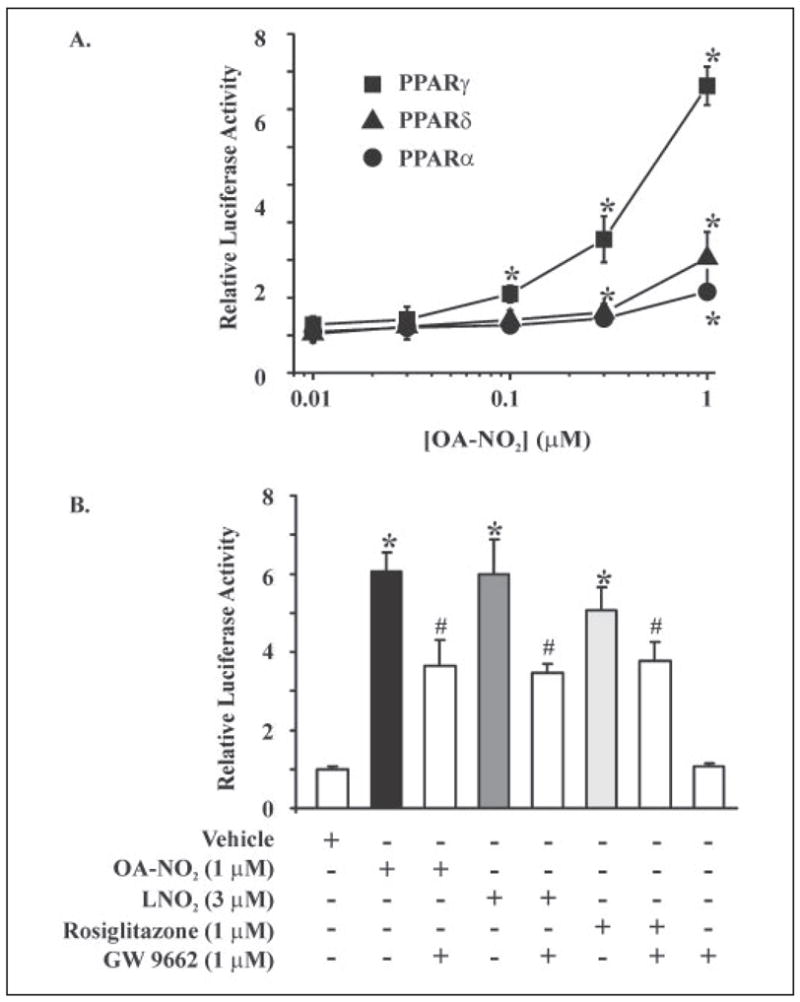FIGURE 9. OA-NO2 is a PPARγ agonist.

A, CV-1 cells transiently co-transfected with a plasmid containing the luciferase gene under the control of three tandem PPRE (PPRE × 3 TK-luciferase) and hPPARγ, hPPARα, or hPPARδ expression plasmids showed all three PPARs were activated by OA-NO2, with the relative activation of PPARγ > PPARδ > PPARα. All values are expressed as mean ± S.D. (n = 3). PPARγ activation was significantly different from vehicle at 100 nM OA-NO2, whereas PPARα and PPARδ activation were significantly different from vehicle at 300 nM and 1 μM OA-NO2, respectively (*, p ≤ 0.05; Student’s t test). B, nitrated oleic acid was more potent than LNO2 in the activation of PPARγ, with 1 μM OA-NO2 inducing a degree of PPARγ activation that was similar to that induced by 3 μM LNO2 versus control (*, p ≤ 0.05; Student’s t test). Nitroalkene activation of PPARγ was partially blocked by the PPARγ antagonist GW9662 (#, p ≤ 0.05; Student’s t test).
